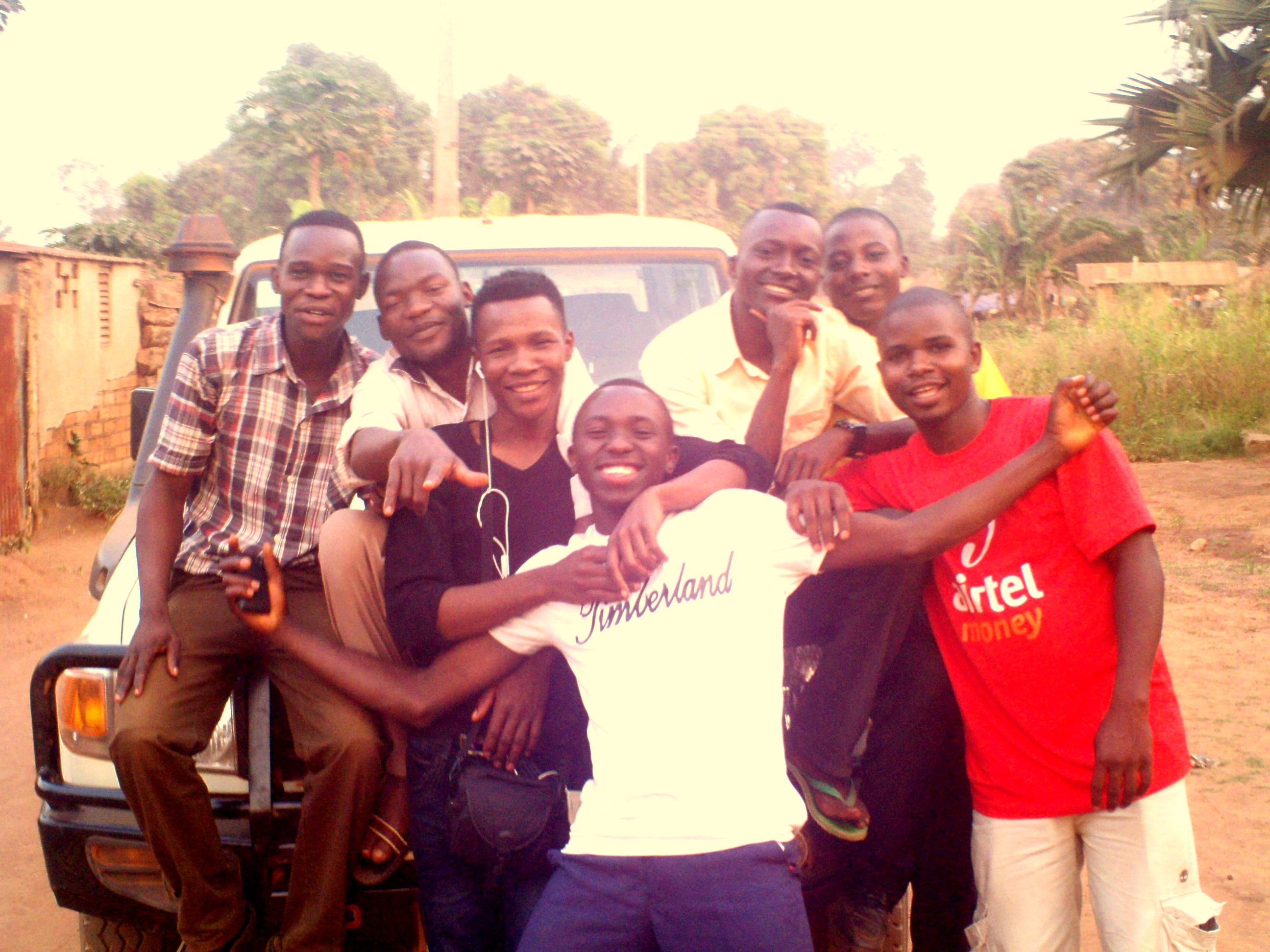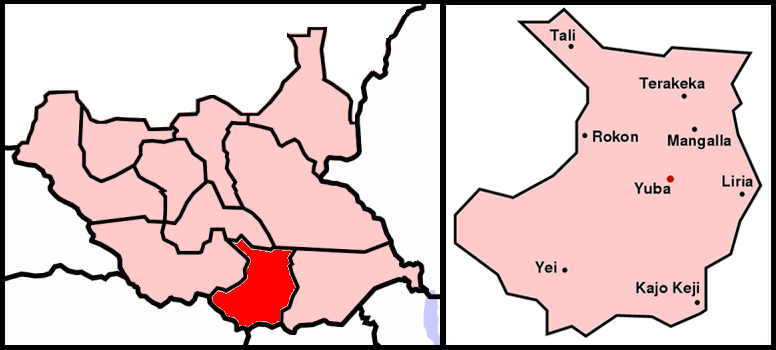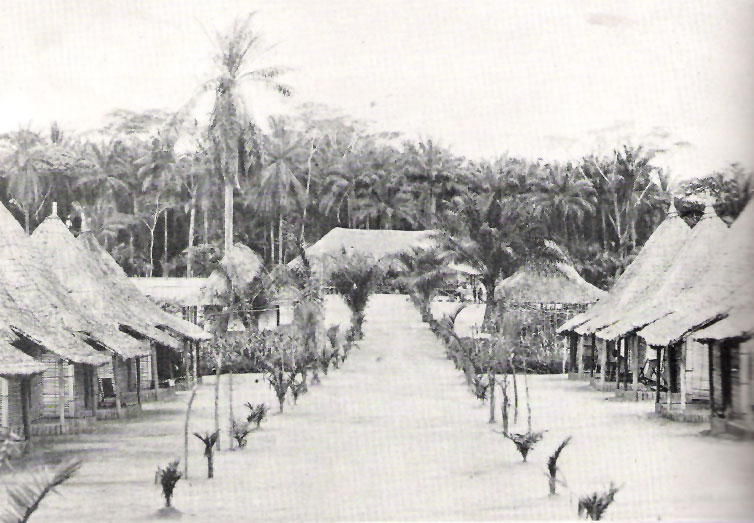|
Azande People
The Azande are an ethnicity, ethnic group in Central Africa speaking the Zande languages (whose classification is uncertain). They live in south-eastern Central African Republic, north-eastern Democratic Republic of the Congo, as well as south-central and south-western South Sudan. The Congolese Azande live in Orientale Province along the Uele River; Isiro, Dungu, Democratic Republic of the Congo, Dungu, Kisangani and Duruma. The Central African Azande live in the districts of Rafaï, Zemio, Bangasu and Obo. The Azande of South Sudan live in Central Equatoria, Central, Western Equatoria and Western Bahr al-Ghazal States, Yei, Maridi, Yambio, Tombura, Deim Zubeir, Wau Town and Momoi. History The Azande were formed by a military conquest during the first half of the 18th century. They were led by two Dynasty, dynasties that differed in origin and political strategy. The Vungara clan created most of the political, linguistic, and cultural parts. A non-Zande dynasty, the Bandia, ... [...More Info...] [...Related Items...] OR: [Wikipedia] [Google] [Baidu] |
Zande Language
Zande is the largest of the Zande languages. It is spoken by the Azande, primarily in the northeast of the Democratic Republic of the Congo and western South Sudan, but also in the eastern part of the Central African Republic. It is called Pazande in the Zande language and Kizande in Lingala. Estimates about the number of speakers vary; in 2001 Koen Impens cited studies that put the number between 700,000 and one million. Phonology Consonants * Alveolar sounds /d, z, ⁿz, s, t, ⁿd/ have allophones as palato-alveolar sounds [d͡ʒ, ʒ, ⁿʒ, ʃ, t͡ʃ, ⁿd͡ʒ] when preceding /i/. * The retroflex tap /ɽ/ can be heard as an alveolar trill [r] in free variation. Vowels Writing system Zande spelling rules were established at the 1928 ''Rejaf Language Conference'' following the principles of the International African Institute. Nasalized vowels are indicated using the tilde : . Consonants with double articulation are represented by digraphs: . In 1959, Archibal ... [...More Info...] [...Related Items...] OR: [Wikipedia] [Google] [Baidu] |
Democratic Republic Of The Congo
The Democratic Republic of the Congo (DRC), also known as the DR Congo, Congo-Kinshasa, or simply the Congo (the last ambiguously also referring to the neighbouring Republic of the Congo), is a country in Central Africa. By land area, it is the List of African countries by area, second-largest country in Africa and the List of countries and dependencies by area, 11th-largest in the world. With a population of around 112 million, the DR Congo is the most populous nominally List of countries and territories where French is an official language, Francophone country in the world. Belgian French, French is the official and most widely spoken language, though there are Languages of the Democratic Republic of the Congo, over 200 indigenous languages. The national capital and largest city is Kinshasa, which is also the economic center. The country is bordered by the Republic of the Congo, the Cabinda Province, Cabinda exclave of Angola, and the South Atlantic Ocean to the west; the Cen ... [...More Info...] [...Related Items...] OR: [Wikipedia] [Google] [Baidu] |
Dynasty
A dynasty is a sequence of rulers from the same family, usually in the context of a monarchy, monarchical system, but sometimes also appearing in republics. A dynasty may also be referred to as a "house", "family" or "clan", among others. Historians periodization, periodize the histories of many states and civilizations, such as the Roman Empire (27 BC – AD 1453), History of Iran, Imperial Iran (678 BC – AD 1979), Ancient Egypt (3100–30 BC), and History of China#Ancient China, Ancient and Imperial China (2070 BC – AD 1912), using a framework of successive dynasties. As such, the term "dynasty" may be used to delimit the era during which a family reigned. Before the 18th century, most dynasties throughout the world were traditionally reckoned patrilineality, patrilineally, such as those that followed the Franks, Frankish Salic law. In polities where it was permitted, succession through a daughter usually established a new dynasty in her husband's family name. This has ... [...More Info...] [...Related Items...] OR: [Wikipedia] [Google] [Baidu] |
Deim Zubeir
Deim Zubeir, from the Arabic ديم الزبير ["Daim az-Zubayr"], commonly translated as the "Camp of Zubeir", is the historically established but highly controversial name of Uyujuku town in the Western Bahr el Ghazal of the Republic of South Sudan, located in the Western Bahr el Ghazal, Western Bahr El Ghazal part of the country, some 70 km from the border with the Central African Republic, Central African Republic (CAR), near the Biri South Sudan, Biri tributary of the River Chel. Due to different transliterations from the Arabic, the name components are also spelled in various combinations Dem, Dehm, Deym, Dam, Daym or Daim, and Zubair, Zubayr, Zoubair, Zoubeir, Zoubayr, Zobeir, Ziber, Zebehr, or Zubier, respectively. The historical remains of the slave camp have been designated a potential World Heritage Site, UNESCO World Heritage Centre site. In the collective memory of South Sudanese people, the very name Deim Zubeir rings as a synonym for millennia of Slavery in ... [...More Info...] [...Related Items...] OR: [Wikipedia] [Google] [Baidu] |
Western Bahr Al-Ghazal
Western Bahr el Ghazal is a state in South Sudan. It has an area of and as of 2020 has estimated 600,000 in population. It is part of the Bahr el Ghazal region. Its capital is Wau. The state shared international borders with Sudan to the north and the Central African Republic to the west. The portion now occupied by Raga County (pronounced 'Raja') is the southern part of the historical region known as "Dar Fertit". History This state, and Raga County in particular, was the part of South Sudan that was most affected by the slave trade conducted by nearby Muslim sultanates from the 18th century on and by Mameluk Egypt in the second half of the 19th century, and Raga County is the only part of South Sudan with a significant number of Muslims and Arabs. In addition to the Baggara Arabs, another local Muslim ethnic group is the Feroghe (Feroge, etc.). Traditionally, the northern part of Raga County falls within the "Baggara belt", the 1400 kilometer wide section of the central Sahel ... [...More Info...] [...Related Items...] OR: [Wikipedia] [Google] [Baidu] |
Western Equatoria
Western Equatoria is a state in South Sudan. It has an area of . The state capital is Yambio. The state was divided into counties, each headed by a County Commissioner. Western Equatoria seceded from Sudan as part of the Republic of South Sudan on 9 July 1956. On October 2, 2011, the state was divided into Amadi, Maridi, and Gbudwe states, and Tambura State was split from Gbudwe state on 14 January 2015. Western Equatoria was re-established by a peace agreement signed on 22 February 2020. History Since the 16th century, Western Equatoria has been a home to the Avokaya, Azande, Baka, Moru, Mundu and Balanda. The Mahdist Revolt of the 1880s destabilized the nascent province, and Equatoria ceased to exist as an Egyptian outpost in 1889. Important settlements in Equatoria included Lado, Gondokoro, Dufile and Wadelai. European colonial maneuverings in the region came to a head in 1898, when the Fashoda Incident occurred at present-day Kodok; Britain and France almost w ... [...More Info...] [...Related Items...] OR: [Wikipedia] [Google] [Baidu] |
Central Equatoria
Central Equatoria is a states of South Sudan, state in South Sudan. With an area of , it is the smallest of the original South Sudanese states. Its previous name was Bahr al-Jabal (also Bahr-el-Jebel), named after a tributary of the White Nile that flows through the state. It was renamed Central Equatoria in the first Interim Legislative Assembly on 1 April 2005 under the government of Southern Sudan (2005–2011), government of Southern Sudan. Central Equatoria seceded from Sudan as part of the South Sudan, Republic of South Sudan on 9 July 2011. The state's capital, Juba, is also the national capital of South Sudan. On October 2, 2015, the state was split into three states: Jubek State, Jubek, Terekeka State, Terekeka, and Yei River State, Yei River. The state of Central Equatoria was re-established by a peace agreement signed on 22 February 2020. Administrative divisions Central Equatoria, like other states in South Sudan, is subdivided into counties, which are further divid ... [...More Info...] [...Related Items...] OR: [Wikipedia] [Google] [Baidu] |
Zemio
Zemio is a town and sub-prefecture in the Haut-Mbomou prefecture of the south-eastern Central African Republic. Zemio was the former capital of the Sultanate of Zemio before it was abolished in 1923 by France. History French Congo colonial government sent five prisoners from Annam to Zemio to work for the French garrison in 1896. The workers planted rice, banana, and tobacco and established a settlement near the town. The prisoners stayed in Zemio until 10 April 1904, when they had to move to Brazzaville. In 1924, a missionary named John Buyse established AIM mission station in Zemio. In the 1970s, Zemio was the center of the illegal ivory trade. Central African Republic Civil War (2012-present) In May 2014, Anti-balaka militia from Bahr attacked Zemio. From 18 to 21 November 2014, a sectarian clash between Muslims and Christians ensued in Zemio, resulting in two people dead, two missing, and 15 injured. Thirty-eight houses were burned in Mama 1 neighborhood. On 28 Ju ... [...More Info...] [...Related Items...] OR: [Wikipedia] [Google] [Baidu] |
Rafaï
Rafaï is a town and sub-prefecture on the Chinko River, in the Central African Republic Prefectures of the Central African Republic, prefecture of Mbomou. Its estimated population is about 14,000 people. History The Sultanate of Rafaï was the last of Ubangi-Shari to still have its sultan. The last sultan assumed the throne in 1909. On 12 March 2013 Rafaï was captured by Seleka rebels. On 3 March 2018 it was captured by Union for Peace in the Central African Republic, UPC rebels, but three days later it was recaptured by Anti-balaka. On 26 March 2021 it was reported that 14 rebels with automatic weapons were stationed near centre of Rafaï. On 30 October armed forces returned to Rafai after eight years of absence. [...More Info...] [...Related Items...] OR: [Wikipedia] [Google] [Baidu] |
Kisangani
Kisangani (), formerly Stanleyville (), is the capital of Tshopo, Tshopo Province, located on the Congo River in the eastern part of the central Congo Basin in the Democratic Republic of the Congo. It is the country's fifth-most populous urban area, with an estimated population of 1,602,144 as of 2016, and the largest of the cities in the tropical woodlands of the Congo. Geographically, Kisangani is flanked by Banalia Territory to the north, Bafwasende to the east, Ubundu, Ubundu Territory to the south, and is bordered by both Opala Territory, Opala and Isangi Territory, Isangi Territories to the west. The city spans an area of 1,910 square kilometers and is situated within the equatorial forest plain at coordinates 0°30' north latitude and 25°20' east longitude, just 80 kilometers from the equator. Kisangani is located approximately 2,100 kilometers (1,300 miles) from the mouth of the Congo River, making it the head of navigation, farthest navigable point upstream. Kisangani ... [...More Info...] [...Related Items...] OR: [Wikipedia] [Google] [Baidu] |
Isiro
Isiro () is the capital of Haut-Uele Province in the northeastern part of the Democratic Republic of the Congo. It lies between the Tropical rainforest, equatorial forest and the savannah and its main resource is coffee. Isiro's population is estimated at approximately 182,000. Most people speak Pa-Zande (Zande language), Lingala and Swahili language, Swahili. History Isiro was named ''Paulis'' after colonel, later diplomat, when it was part of the Belgian Congo. The city was developed in 1934 and reached its peak in 1957. In the troubled days of Congo's independence and its aftermath, operation ''Black Dragoon'' brought fighting between Belgian paratroopers and local Simba Rebellion, Simba militias. In 1998, Isiro became the home of a newly created Dominican Order, Dominican-operated university called ''University of Uélé, Université de l'Uélé''. It is the third city in Orientale province (after Kisangani and Bunia) to welcome a university. In 2015 Isiro became the capita ... [...More Info...] [...Related Items...] OR: [Wikipedia] [Google] [Baidu] |







